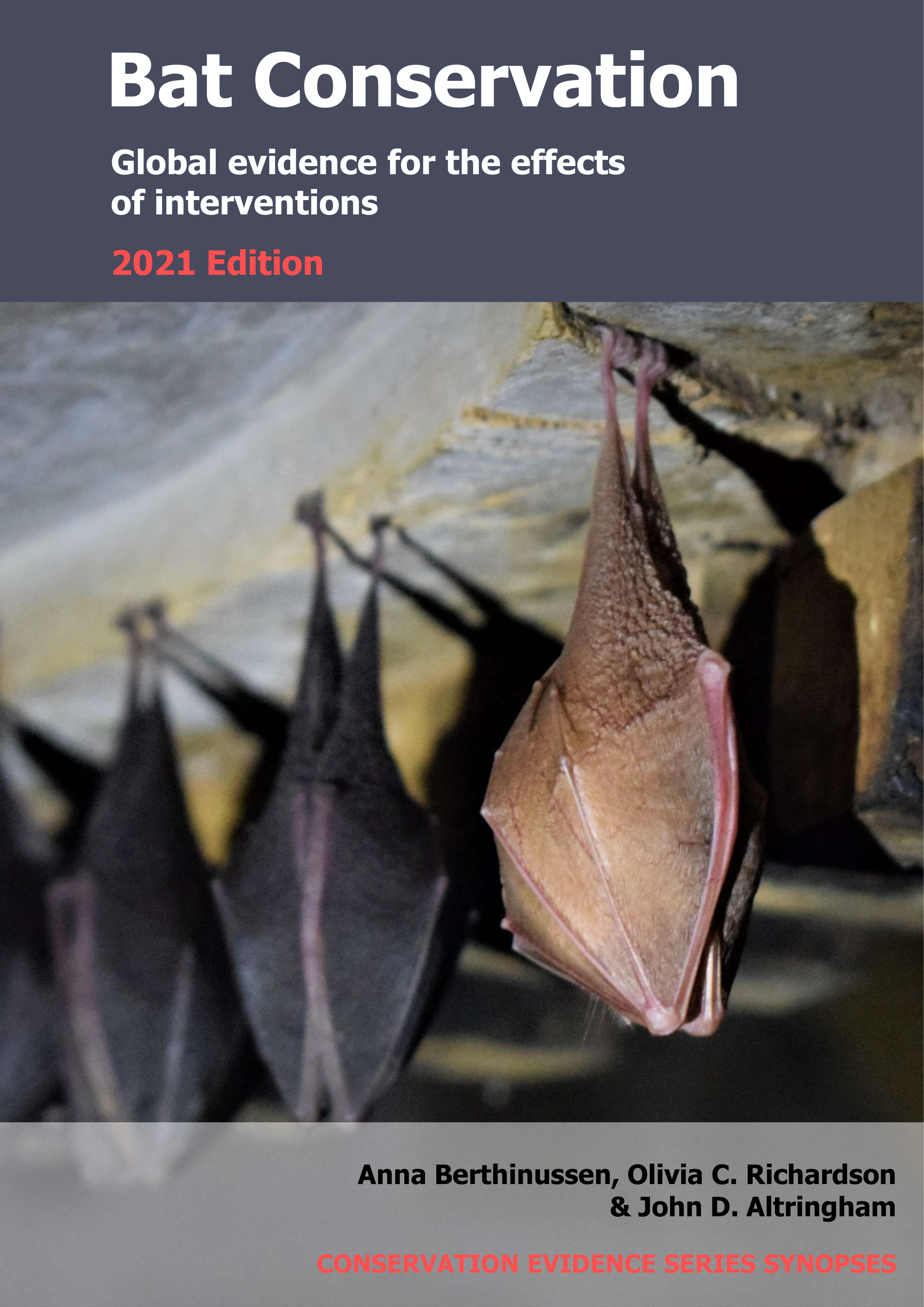Use non-lethal measures to prevent bats from accessing fruit in orchards to reduce human-wildlife conflict
-
Overall effectiveness category Likely to be beneficial
-
Number of studies: 2
View assessment score
Hide assessment score
How is the evidence assessed?
-
Effectiveness
70% -
Certainty
50% -
Harms
0%
Study locations
Supporting evidence from individual studies
A replicated, randomized, controlled study in 2012–2013 at two lychee Litchi chinensis growing sites in Madagascar (Raharimihaja et al 2016) found that using an organic deterrent or plastic flags reduced lychee damage caused by Madagascan flying foxes Pteropus rufus, and ringing bells caused most bats to fly away. At both sites, the average proportion or number of lychees damaged by flying foxes/fruit cluster was lower with an organic deterrent (Site 1 = 5%; Site 2: two fruit/fruit cluster) or plastic flags (Site 1 = 32%; Site 2 = 0.5 fruit/fruit cluster) than with no deterrent (Site 1 = 62%; Site 2 = 11 fruit/fruit cluster). Across both sites, ringing bells resulted in 35 of 44 (80%) flying foxes flying away. Three deterrents were tested at two sites in 2012 and 2013. An organic deterrent (‘Plantskydd’) made from dried blood and vegetable oil was mixed with water and sprayed onto 19–27 lychee clusters/site (each with 60–125 fruit), 15 days before lychees ripened. Bright pink plastic flags (1 x 0.5 m) were hung 1 m from 18–20 randomly selected lychee clusters/site (each with 100–150 fruit). Controls were 21–32 lychee clusters/site with no deterrents. On three occasions, six bells (12-cm diameter) were hung in two lychee trees for four consecutive nights. Bells were rung using a string between 18:00 and 22:00 h when flying foxes attempted to feed on lychees. Lychee damage caused by flying foxes (identified from teeth marks) was monitored daily until lychees were collected by farmers.
Study and other actions testedA replicated, controlled study in 2016–2017 of 18 lychee Litchi chinensis trees in three towns in central Mauritius (Tollington et al 2019) found that covering individual branches with nylon net bags reduced damage to lychees, mostly caused by Mauritius fruit bats Pteropus niger. Lychee yield from panicles that were covered with net bags was 33% greater than that from uncovered panicles (data reported as statistical model results) due to reduced damage by Mauritius fruit bats, birds, or other causes. Bats were estimated to damage 42% of lychees, birds 13% and unknown causes or splitting 21%. Up to six individual panicles on each of 18 ‘backyard’ lychee trees were covered with nylon net bags and six were left uncovered (total 75 covered, 81 uncovered). The number of lychees on each panicle and damaged/fallen lychees were counted every 2–3 days over an average of 18 days in November–January 2016/2017. Damage by bats was identified from bite marks or discarded seeds.
Study and other actions tested
Where has this evidence come from?
List of journals searched by synopsis
All the journals searched for all synopses
This Action forms part of the Action Synopsis:
Bat Conservation
Bat Conservation - Published 2021
Update 2020





)_2023.JPG)














